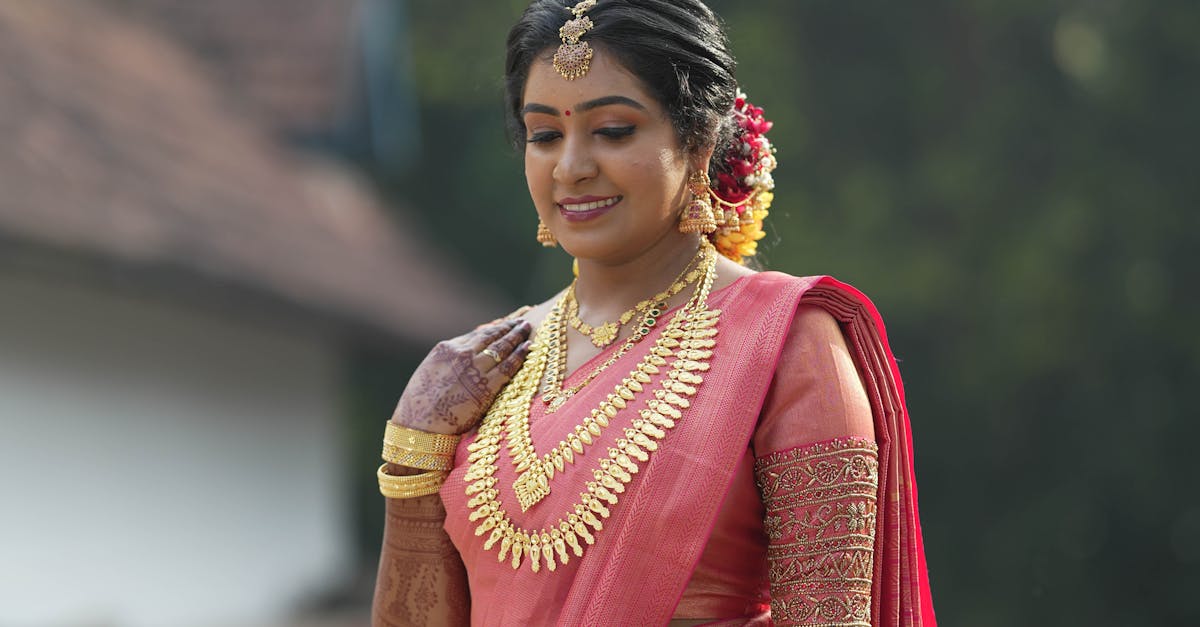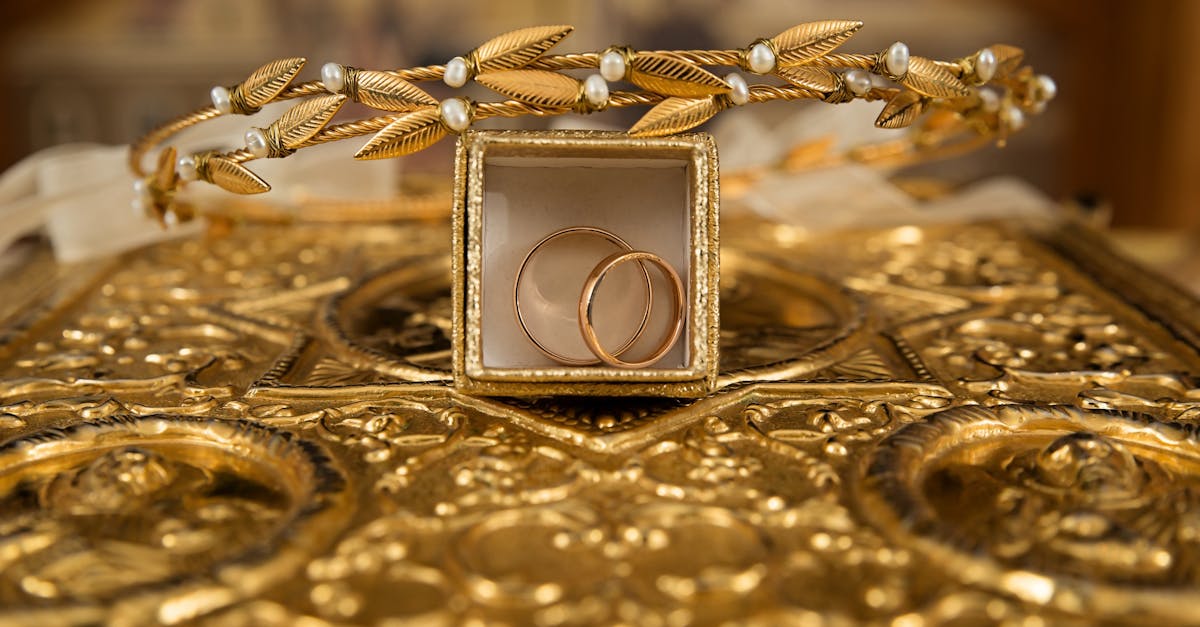Navigating the Golden Maze: A Buyer’s Odyssey into the Enchanting World of Gold Jewelry

Gold, an alluring metal that has captivated hearts for millennia, continues to reign supreme in the realm of jewelry. Its timeless beauty, enduring value, and versatility make it a coveted choice for adornment and investment. This comprehensive guide will unveil the secrets of buying gold jewelry, empowering you to navigate the intricacies of karatage, color variations, hallmarks, design styles, and ethical considerations. Get ready to unlock the secrets and discover the art of discerning gold jewelry like a true connoisseur.
Key Insights
-
Gold’s timeless appeal and enduring value make it a coveted choice for jewelry.
-
Karatage measures gold purity, with higher karats indicating a higher percentage of pure gold.
-
Gold comes in a variety of colors, including yellow, white, rose, and green.
-
Hallmarks provide valuable information about the authenticity and purity of gold jewelry.
-
Consider ethical implications when buying gold jewelry, supporting responsible sourcing practices.
1. The Allure of Gold
Gold, a metal of unparalleled allure, has captivated civilizations throughout history. Its timeless beauty, enduring value, and versatility have made it an enduring symbol of wealth, power, and elegance.
Gold’s captivating qualities stem from its unique physical properties. Its rich, warm hue exudes a sense of luxury and sophistication, while its malleability and durability allow it to be crafted into intricate designs. Unlike other metals, gold does not tarnish or corrode, ensuring that its luster and beauty endure for generations.
2. Understanding Karatage: Unraveling the Gold Standard

Karatage, a term often encountered in the world of gold jewelry, refers to the purity of gold. It is expressed in karats, with 24 karats (24K) representing pure gold. The higher the karatage, the higher the percentage of pure gold in the alloy.
Understanding karatage is crucial when evaluating the value and durability of gold jewelry. For instance, 24K gold, while highly pure, is too soft for everyday wear. Therefore, gold is often alloyed with other metals, such as copper or silver, to enhance its strength and durability.
The most common karatages for gold jewelry are 10K, 14K, 18K, and 22K. 10K gold contains 41.7% pure gold, making it more affordable and durable, while 22K gold boasts 91.7% pure gold, offering a richer color and a higher value.
3. Color Spectrum of Gold: Beyond Yellow
Gold’s allure extends beyond its traditional yellow hue, as it comes in a captivating spectrum of colors. White gold, with its cool, silvery appearance, has become increasingly popular in recent years. It is created by alloying gold with white metals such as palladium or nickel, resulting in a versatile metal that complements diamonds and other gemstones.
Rose gold, with its warm, rosy hue, has a romantic and vintage charm. It is made by mixing gold with copper, and the proportions of each metal determine the intensity of the pink color. Rose gold is a popular choice for engagement rings and other sentimental jewelry.
Green gold, a relatively rare variation, gets its unique color from the addition of silver and sometimes zinc. It has a subtle, earthy charm and is often used in antique and contemporary jewelry.
Exploring the color spectrum of gold allows you to choose jewelry that aligns with your personal style and preferences, whether it’s the timeless elegance of yellow gold, the modern sophistication of white gold, the romantic allure of rose gold, or the unique charm of green gold.
4. Hallmarks of Authenticity: Verifying Gold’s Purity

Hallmarks are tiny stamps or engravings found on gold jewelry, serving as a guarantee of its authenticity and purity. These marks provide valuable information about the metal’s origin, composition, and quality.
Understanding hallmarks is essential for discerning buyers. The most common hallmark is the karat mark, which indicates the gold’s purity. For example, a piece marked
5. Design Decoded: Timeless Styles and Modern Masterpieces
The world of gold jewelry design is a vast and ever-evolving landscape, offering a myriad of styles to suit every taste and personality. From timeless classics to contemporary masterpieces, gold jewelry has the versatility to complement any outfit or occasion.
Classic solitaire designs, featuring a single diamond or gemstone set on a simple band, exude timeless elegance. These pieces are perfect for those who appreciate understated sophistication. For a bolder statement, contemporary designs push the boundaries of creativity, incorporating intricate patterns, asymmetrical shapes, and unexpected combinations of materials.
Whether you prefer the enduring charm of traditional styles or the cutting-edge allure of modern designs, there’s a gold jewelry piece out there to reflect your unique personality and style.
6. Insider Tips: Savvy Shopping Strategies
Navigating the world of gold jewelry shopping requires a keen eye and savvy strategies. Here are some insider tips to help you make informed decisions and find the best deals:
-
Do your research: Before you start shopping, educate yourself about gold jewelry. Understand the different types of gold, karatage, and design styles. This knowledge will empower you to ask the right questions and make comparisons.
-
Compare prices: Don’t settle for the first piece you see. Take the time to compare prices from different jewelers, both online and offline. Look for sales, discounts, and special offers to save money.
-
Consider the 4Cs: When buying diamonds or gemstones, consider the 4Cs: carat (weight), clarity, cut, and color. These factors influence the value and beauty of the stone.
7. Ethical Considerations: Responsible Gold Sourcing
As consumers, we have the power to make ethical choices that support responsible practices. When it comes to gold jewelry, consider the ethical implications of mining and sourcing. Look for jewelers who prioritize sustainability and transparency in their supply chain.
Artisanal and small-scale mining practices often have a lower environmental impact and support local communities. Fairtrade gold ensures that miners are paid fair wages and work in safe conditions. Recycled gold reduces the need for new mining and conserves natural resources.
By choosing ethically sourced gold jewelry, you can align your purchases with your values and contribute to a more sustainable and equitable industry.
What is the difference between karat and carat?
Karat measures the purity of gold, while carat measures the weight of a diamond or gemstone.
Is it better to buy higher or lower karat gold?
Higher karat gold is more pure, but also softer and more expensive. Lower karat gold is less pure, but more durable and affordable.
What are the different colors of gold?
Gold comes in a variety of colors, including yellow, white, rose, and green.
How can I ensure the authenticity of my gold jewelry?
Look for hallmarks that indicate the karatage and origin of the gold.
What are some ethical considerations when buying gold jewelry?
Consider the environmental and social impact of gold mining, and support jewelers who prioritize responsible sourcing practices.
Table of Key Insights
| Key Insight | Description | |—|—| | Gold’s Enduring Appeal | Gold’s timeless beauty, value, and versatility make it a popular choice for jewelry. | | Karatage: A Measure of Purity | Karatage indicates the percentage of pure gold in an alloy, with higher karats representing greater purity. | | Gold’s Colorful Spectrum | Gold is available in a range of colors, including yellow, white, rose, and green, to suit different preferences. | | Hallmarks: Verifying Authenticity | Hallmarks provide valuable information about the origin, purity, and authenticity of gold jewelry. | | Ethical Considerations | Supporting responsible gold sourcing practices ensures that mining and production align with environmental and social values. |
Leave a Reply